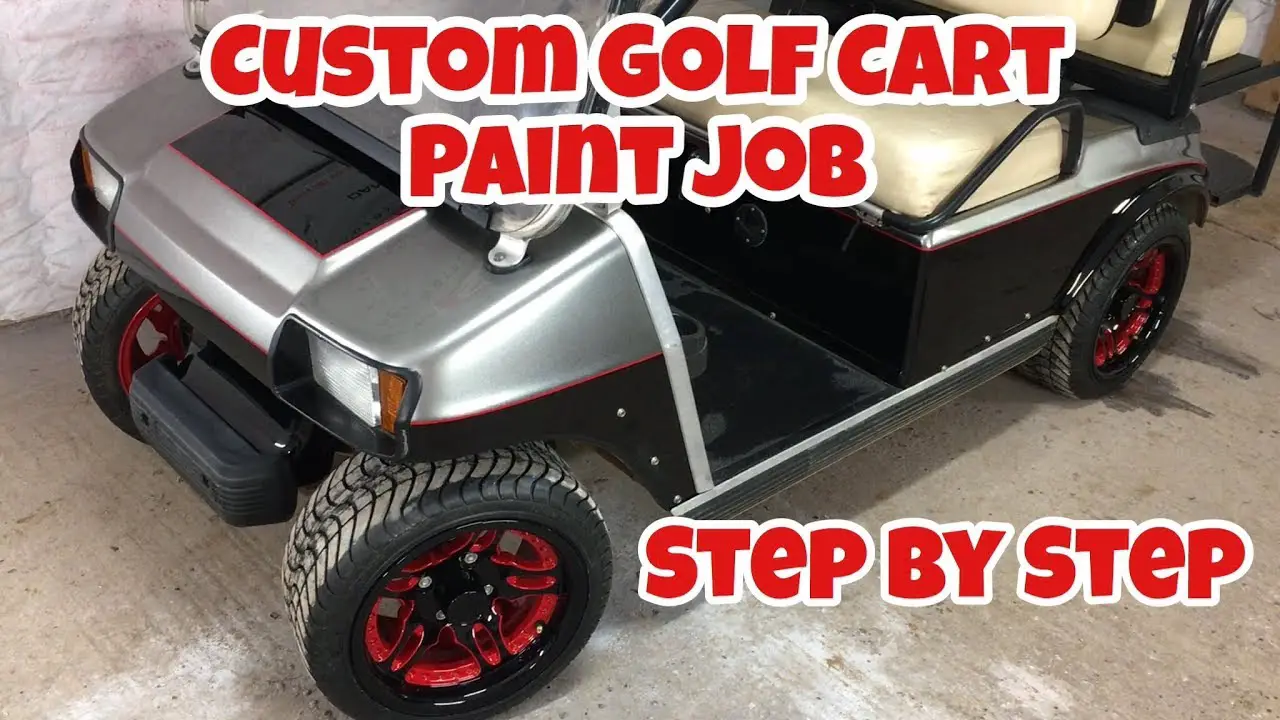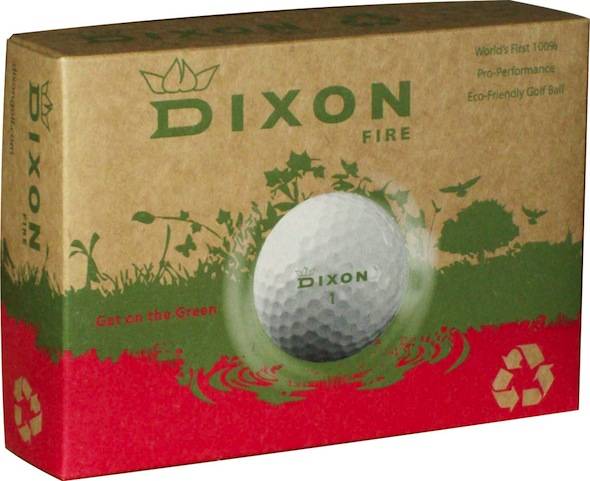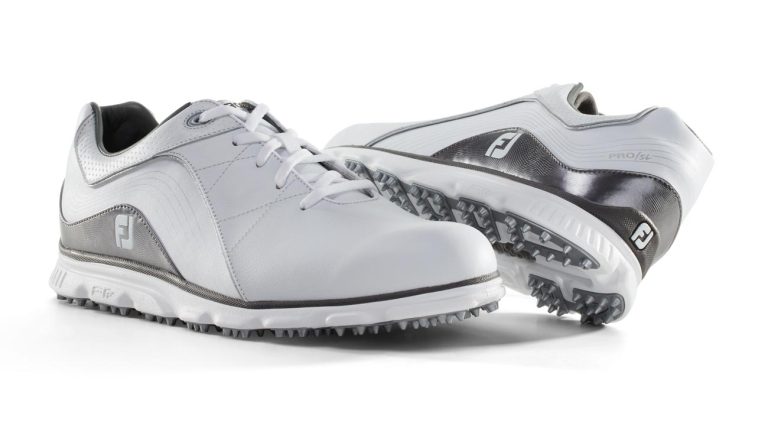How To Paint A Golf Cart

Is your golf cart looking a bit worn-out or lacking in style? Don’t worry, because we have the perfect solution for you. Painting your golf cart is an excellent way to give it a fresh and vibrant makeover, transforming it into a personalized masterpiece that turns heads on the greens.
In this comprehensive guide, we will take you through the step-by-step process of painting a golf cart, from gathering the necessary materials to adding the finishing touches. Whether you’re a seasoned DIY enthusiast or a first-time painter, this guide is designed to equip you with the knowledge and confidence to achieve a professional-quality paint job.
From choosing the right paint and color to prepping the surface, applying primer, and executing the final coat, we’ll cover it all. Along the way, we’ll provide practical tips, pro techniques, and pattern breakers to ensure that your painting experience is not only successful but also enjoyable.
So, if you’re ready to revitalize your golf cart and make a statement on the course, let’s dive into the world of golf cart painting and unleash your creativity. Get your brushes and rollers ready, and let’s transform your golf cart into a true reflection of your style and personality.

I. Gathering Materials and Preparing the Golf Cart
Before you dive into the painting process, it’s essential to gather the necessary materials and prepare your golf cart for a successful paint job. Let’s explore the key steps involved:
Essential materials needed for painting a golf cart
To ensure a smooth painting experience, gather the following materials:
| Materials | Description |
|---|---|
| Sandpaper | Various grits for surface preparation |
| Masking tape | To protect non-paintable areas |
| Tack cloth | For removing dust and debris before painting |
| Primer | Suitable primer for the cart’s surface |
| High-quality paint | Automotive or enamel paint for a durable finish |
| Paintbrushes/Rollers | Appropriate tools for paint application |
| Drop cloths or tarps | To protect the surrounding area from paint splatters |
| Safety equipment | Gloves, goggles, and a mask for personal protection |
Preparing the golf cart for painting
Proper preparation is key to achieving a flawless paint job. Follow these steps:
- Cleaning the cart’s exterior: Thoroughly clean the cart’s exterior using mild soap and water. Remove any dirt, grease, or debris that may interfere with the paint adhesion.
- Sanding rough areas: Inspect the cart’s surface for any rough or damaged areas. Use sandpaper with varying grits to smooth out these imperfections, ensuring a uniform finish.
- Masking off non-paintable areas: Identify the areas of the cart that should not be painted, such as lights, emblems, or chrome accents. Use masking tape to cover and protect these areas from paint overspray.
Properly preparing your golf cart ensures a clean canvas for the paint application, resulting in a professional-looking finish.
II. Removing Parts and Accessories
To achieve a thorough and seamless paint job, it’s often necessary to remove certain parts and accessories from the golf cart. Let’s discuss this process in detail:
Identifying removable parts and accessories
Before beginning the removal process, identify the parts and accessories that can be safely detached from the golf cart. Common removable components may include:
- Seats
- Steering wheel
- Bumpers
- Trim pieces
- Mirrors
Safely removing seats, wheels, and other components
Once you’ve identified the removable parts, follow these general steps for safe removal:
- Consult the golf cart manual: Refer to the golf cart manual or manufacturer’s guidelines for specific instructions on removing certain parts. Different cart models may have unique considerations.
- Gather the necessary tools: Prepare the appropriate tools, such as wrenches or screwdrivers, to safely remove the components. Avoid using excessive force to prevent damage.
- Pattern break: Practical Tip – Organizing removed parts: As you remove each component, label and organize them in a systematic manner. This practice will ensure ease during reassembly and minimize the risk of misplacing or damaging any parts.
- Remove seats and cushions: Begin by removing the seat cushions, followed by the seat backs. Typically, seats can be detached by removing bolts or screws located underneath or at the back of the seat.
- Take off the steering wheel: To remove the steering wheel, locate the center nut or bolt holding it in place. Use the appropriate tool to loosen and remove it. Be cautious not to damage the steering column during the process.
- Remove bumpers and trim pieces: Depending on your golf cart model, bumpers and trim pieces may require different removal methods. Consult the manual or research specific instructions for your cart to ensure a safe removal process.
- Take off mirrors and other accessories: Detach any additional accessories, such as mirrors or custom attachments, following the manufacturer’s instructions or any applicable guidelines.
Remember to keep all the removed parts and accessories in a safe and organized manner, as this will make the reassembly process smoother and more efficient.
III. Cleaning and Prepping the Surface
Before applying primer and paint, it’s crucial to thoroughly clean and prepare the surface of the golf cart. Let’s delve into the essential steps for surface preparation:
Importance of cleaning the golf cart’s surface
Cleaning the cart’s surface removes any contaminants that could affect the adhesion of the paint. It ensures a smooth and even application, resulting in a professional-looking finish.
Using soap and water to remove dirt and grime
Start by washing the entire exterior of the golf cart using a mixture of mild soap and water. Use a sponge or soft cloth to gently scrub the surface and remove dirt, grime, and any residue. Pay attention to hard-to-reach areas and crevices, ensuring that all surfaces are thoroughly cleaned.
Applying a degreaser to eliminate grease and oil residues
In addition to soap and water, use a degreaser to remove any stubborn grease or oil residues from the cart’s surface. Apply the degreaser following the manufacturer’s instructions and use a clean cloth or sponge to scrub away the contaminants.
Choosing the right degreaser for the cart’s surface
When selecting a degreaser, consider the type of surface material of your golf cart. Different surfaces may require different degreasers. For example:
- For metal surfaces: Choose a degreaser specifically designed for metal to effectively remove grease and oil residues.
- For plastic or fiberglass surfaces: Opt for a degreaser suitable for these materials to prevent any potential damage.
Always follow the manufacturer’s instructions and exercise caution when working with degreasers, as some products may require protective equipment such as gloves or eye protection.
Scrubbing and rinsing the surface thoroughly
After applying the degreaser, use a clean cloth or sponge to scrub the surface once again, ensuring that all residues are effectively removed. Rinse the cart thoroughly with clean water to eliminate any remaining cleaning agents or debris.
By cleaning the golf cart’s surface diligently, you create a clean and smooth foundation for the primer and paint, allowing for better adhesion and a professional finish.
IV. Sanding the Cart’s Exterior
Sanding the cart’s exterior is a crucial step to ensure a smooth and even surface for paint application. Let’s explore the key aspects of this process:
Purpose of sanding the cart’s exterior
Sanding serves several purposes when painting a golf cart. It helps to:
- Remove any existing paint, clear coat, or imperfections.
- Smooth out rough or uneven areas.
- Create a rough surface for better paint adhesion.
- Promote a professional finish by ensuring a smooth canvas.
Selecting the appropriate sandpaper grit for the surface
Choosing the right sandpaper grit is essential for achieving the desired outcome. The grit of sandpaper you need will depend on the condition of the cart’s exterior and the level of surface preparation required. Here are some general guidelines:
- For removing existing paint or clear coat: Start with a coarser grit, such as 80 or 120, to effectively strip away the old paint layers. Gradually transition to finer grits, such as 220 or 320, for a smoother surface.
- For smoothing rough or uneven areas: Begin with a medium grit, such as 120 or 180, to even out any imperfections. Follow up with a finer grit, such as 220 or 320, to achieve a smoother finish.
- For promoting paint adhesion: Use a fine grit, such as 220 or 320, to create a slightly rough surface that helps the primer and paint adhere better.
Remember to use sandpaper with a backing material suitable for the surface of your golf cart. Sanding blocks or holders can provide better control and evenly distribute the pressure during sanding.
Sanding the cart’s exterior to create a smooth finish
Follow these steps for effective sanding:
- Pattern break: Practical Tip – Starting with small sections: To manage the sanding process more efficiently, divide the cart’s exterior into small sections. Focus on one section at a time to ensure thorough sanding and maintain control over the process.
- Hold the sandpaper securely: Wrap the sandpaper around a sanding block or use a sanding tool designed to hold the sandpaper securely. This ensures even pressure and consistent sanding across the surface.
- Sand in a consistent direction: Use smooth, controlled strokes while sanding, moving in the same direction. This helps prevent uneven sanding marks and ensures a uniform surface.
- Apply gentle pressure: Avoid applying excessive pressure, as it can result in uneven sanding or damage to the surface. Let the sandpaper do the work and maintain a light, even pressure throughout the process.
- Inspect the surface: Regularly inspect the sanded surface to ensure that the desired smoothness and evenness are achieved. Continue sanding until the entire surface is uniformly smooth.
- Pattern break: Pro Tip – Wet sanding for a smoother finish: For an even smoother finish, you can opt for wet sanding. Wet sanding involves using water or a sanding lubricant to reduce friction and create a finer surface. Wet sanding can be particularly effective for clear coats or achieving a high-gloss finish.
Remember to clean the surface thoroughly after sanding to remove any sanding residue before proceeding to the next step.
By sanding the cart’s exterior, you create a smooth and properly prepared surface that allows for better paint adhesion and ensures a professional-looking finish.
V. Repairing Damaged Areas
Before applying primer and paint, it’s essential to address any dents, scratches, or rust on the cart’s exterior. Repairing these damaged areas will result in a more polished and flawless paint job. Let’s explore the steps involved:
Inspecting the cart for dents, scratches, or rust
Carefully examine the entire surface of the golf cart for any visible damage. Look out for dents, deep scratches, or areas affected by rust. Make a note of these areas for targeted repairs.
Filling dents and deep scratches with body filler
Dents and deep scratches require filling with a suitable body filler to restore the smoothness of the surface. Follow these steps:
- Clean and prep the damaged area: Thoroughly clean the damaged area to remove any dirt, debris, or loose particles. Use sandpaper or a sanding block to lightly roughen the surface around the damaged area, ensuring better adhesion of the body filler.
- Pattern break: Practical Tip – Using a spreader or putty knife: When applying the body filler, use a spreader or putty knife to evenly distribute and smooth the filler across the damaged area. Work in thin layers, gradually building up the filler to achieve the desired level.
- Allow the filler to dry and harden: Follow the manufacturer’s instructions regarding drying time for the body filler. Typically, it takes around 20-30 minutes to dry. Avoid rushing the process to ensure proper curing.
- Sand and shape the filled area: Once the body filler is fully dried and hardened, use sandpaper to carefully sand the filled area. Start with a coarser grit sandpaper and gradually transition to finer grits for a smooth finish. Shape the area to match the surrounding surface, ensuring a seamless integration.
- Inspect and repeat if necessary: After sanding, inspect the repaired area. If any imperfections or low spots remain, repeat the filling and sanding process until the desired result is achieved.
Repairing damaged areas before painting ensures a uniform and flawless surface, providing a solid foundation for the primer and paint layers.
VI. Applying Primer
Priming the golf cart is a critical step that promotes paint adhesion, enhances color vibrancy, and increases the durability of the final finish. Let’s explore the process of applying primer:
Importance of applying primer to a golf cart
Primer acts as a preparatory layer between the surface of the cart and the paint. It provides several key benefits:
- Improves paint adhesion for a long-lasting finish
- Helps seal and protect the surface from corrosion
- Enhances color accuracy and vibrancy
- Promotes a smoother and more uniform paint application
Choosing the right type of primer for the cart’s surface
When selecting a primer, consider the material of your golf cart’s exterior. Different surfaces require different types of primer. Here are some common options:
- Epoxy primer: Ideal for metal surfaces, epoxy primer provides excellent adhesion, corrosion resistance, and durability.
- Self-etching primer: Suitable for bare metal or aluminum surfaces, self-etching primer chemically bonds to the metal, providing a strong foundation for paint adhesion.
- High-build primer: Used for surfaces with minor imperfections, high-build primer fills in small scratches or low spots, creating a smoother surface for paint application.
Consult with a local automotive or paint supplier to determine the best primer type for your golf cart based on its surface material.
Applying primer to create a suitable base for paint
Follow these steps for effective primer application:
- Pattern break: Practical Tip – Use a paint grid: To ensure consistent and controlled application, consider using a paint grid when pouring primer into the paint tray. The grid removes excess primer from the brush or roller, allowing for a smoother and more even coat.
- Begin with clean surfaces: Ensure the golf cart’s exterior is clean and free from dust or debris. Wipe down the surface with a tack cloth to remove any remaining particles.
- Apply primer in thin, even coats: Dip the brush or roller into the primer, removing any excess on the grid. Apply the primer in thin, even coats, working in small sections at a time. Start from the top and work your way down, maintaining a consistent application pattern.
- Pattern break: Pro Tip – Spraying primer: For larger surfaces or more intricate areas, using a spray gun can provide a more efficient and uniform application of primer. Follow the manufacturer’s instructions for proper spraying techniques and safety precautions.
- Allow the primer to dry: Check the drying time indicated on the primer product. Typically, it takes around 30 minutes to an hour for the primer to dry, but it’s important to follow the specific instructions provided by the manufacturer. Avoid rushing the drying process to ensure proper adhesion and a smooth base for the paint.
- Inspect and sand if necessary: Once the primer is completely dry, carefully inspect the surface for any imperfections or rough areas. If needed, lightly sand the primer using fine-grit sandpaper to create a smooth and even surface for the paint.
Applying primer to your golf cart sets the stage for a flawless and long-lasting paint job. It enhances paint adhesion, improves color vibrancy, and contributes to the overall durability of the final finish.
VII. Choosing the Paint and Color
Choosing the right paint and color for your golf cart is an exciting step that allows you to express your personal style and make your cart stand out. Let’s explore the key considerations when selecting paint and color options:
Exploring different types of paint suitable for a golf cart
There are various types of paint suitable for painting a golf cart, each with its own characteristics and advantages. Here are some common options:
- Automotive paint: Automotive-grade paint is highly durable, resistant to chipping and fading, and offers a wide range of color options. It provides a professional finish and is designed to withstand outdoor elements.
- Enamel paint: Enamel paint is known for its durability and resistance to abrasion and weathering. It is available in a variety of finishes, including gloss, semi-gloss, and matte, allowing you to choose the desired look for your golf cart.
- Acrylic paint: Acrylic paint is a popular choice for its ease of application, quick drying time, and versatility. It offers good color retention and can be applied to various surfaces, including metal, plastic, and fiberglass.
Consider your specific needs and preferences when selecting the type of paint for your golf cart. Automotive-grade paint is recommended for its durability and longevity, especially if your cart is regularly exposed to outdoor conditions.
Considering factors such as weather resistance and durability
When choosing paint for your golf cart, it’s important to consider its resistance to weather conditions and overall durability. Golf carts are often used in outdoor settings and exposed to sunlight, moisture, and other environmental elements. Opt for paints that are specifically formulated to withstand these conditions and provide long-lasting protection.
- Look for paint products that offer UV resistance to prevent color fading and deterioration caused by prolonged sun exposure.
- Consider paints that are resistant to chipping, peeling, and scratches, ensuring the paint remains intact and maintains its appearance over time.
By selecting paint that is weather-resistant and durable, you can ensure that your golf cart maintains its vibrant and fresh look for years to come.
Selecting a color that suits personal preference and style
Choosing the right color for your golf cart allows you to showcase your personal style and make a statement. Whether you prefer a classic and sleek look or a bold and vibrant appearance, consider the following factors when selecting a color:
- Aesthetic appeal: Choose a color that complements your personal taste and aligns with the overall aesthetic you envision for your golf cart.
- Visibility and safety: Keep in mind that brighter colors, such as yellow or orange, can enhance visibility, especially in crowded or high-traffic areas.
- Pattern break: Practical Tip – Color samples: Before making a final decision, obtain color samples or swatches from paint suppliers. Test these colors on a small area of the golf cart or compare them against the cart’s existing features to ensure they match your desired look.
Remember, the color you choose should not only be visually appealing but also reflect your personality and style. Take your time to explore different options and envision how each color will transform the overall appearance of your golf cart.
Now that you have a good understanding of the types of paint available and the factors to consider, it’s time to move on to the exciting part—applying the paint to your golf cart!
VIII. Applying the Paint
Proper application of paint is crucial to achieving a smooth, even, and professional-looking finish on your golf cart. Let’s dive into the process of applying the paint:
Preparing the paint for application
Before you start painting, ensure that your paint is properly prepared for application. Follow these steps:
- Pattern break: Practical Tip – Mixing and straining the paint: If you’re using paint that requires mixing, thoroughly mix the paint according to the manufacturer’s instructions. Additionally, strain the paint using a paint strainer to remove any impurities or lumps that could affect the finish.
- Pattern break: Pro Tip – Test sprays or brush strokes: Before applying the paint to the entire golf cart, conduct test sprays or brush strokes on a small, inconspicuous area. This allows you to evaluate the color, consistency, and coverage before proceeding with the full application.
Choosing the appropriate painting technique
The painting technique you choose will depend on personal preference, the size of the golf cart, and the type of paint being used. Consider the following options:
- Brushing: Using a paintbrush is a common and versatile method for applying paint. It allows for more control and precision, making it ideal for smaller areas, intricate details, or touch-ups.
- Rolling: Paint rollers are efficient for covering larger areas quickly and evenly. They work well for flat or slightly curved surfaces, providing a smooth and consistent coat of paint.
- Spraying: Spraying is a popular choice for larger surfaces or when a flawless, factory-like finish is desired. Paint sprayers ensure even coverage and a professional appearance. However, they may require more extensive preparation and cleanup.
Choose the painting technique that suits your comfort level, the size of the project, and the desired finish.
Applying paint in thin, even coats
Regardless of the technique you choose, follow these general steps for applying the paint:
- Pattern break: Practical Tip – Start from the top: Begin painting from the top of the golf cart and work your way down. This prevents paint from dripping onto freshly painted surfaces.
- Apply thin coats: Rather than applying a thick coat of paint all at once, apply thin and even coats. This helps prevent runs, drips, and uneven drying. Multiple thin coats provide better coverage and a more professional finish.
- Overlap each stroke: When applying paint, slightly overlap each stroke with the previous one. This ensures even distribution of the paint and eliminates visible lines or streaks.
- Pattern break: Pro Tip – Back brushing or rolling: After applying the paint with a brush or roller, consider back brushing or rolling the surface lightly. This technique helps smooth out any brush or roller marks, ensuring a seamless finish.
- Allow proper drying time: Follow the paint manufacturer’s instructions for the recommended drying time between coats. Allow each coat to dry fully before applying the next. Be patient and avoid rushing the process to achieve the best results.
Continue applying thin, even coats of paint until you achieve the desired coverage and finish. Remember to consider pattern breakers, such as incorporating a unique design or adding contrasting colors for a more personalized touch.
IX. Allowing the Paint to Dry and Cure
Once you’ve completed the paint application, it’s crucial to allow sufficient time for the paint to dry and cure. This stage is essential for achieving a durable and long-lasting finish. Follow these guidelines:
- Pattern break: Practical Tip – Create a drying and curing space: Find a well-ventilated and dust-free area to allow the paint to dry and cure. Consider using a designated space like a garage or covered area to protect the cart from dust, debris, and inclement weather.
- Temperature and humidity considerations: Ensure that the drying and curing space maintains an optimal temperature and humidity level. Follow the paint manufacturer’s instructions regarding recommended conditions for drying and curing. Generally, a temperature between 60-80°F (15-27°C) with low humidity is ideal.
- Drying time vs. curing time: Drying time refers to the time it takes for the paint to lose its wetness and become touch-dry. However, curing time refers to the period required for the paint to fully harden and reach its maximum durability. Be mindful that the drying time mentioned on the paint can may not necessarily indicate the complete curing time.
- Pattern break: Pro Tip – Patience is key: Patience is crucial during the drying and curing process. Allow ample time for each coat to dry and cure before handling or applying subsequent coats. Rushing the process may result in compromised adhesion or an uneven finish.
- Consult the paint manufacturer’s instructions: Different paint products have varying drying and curing times. Refer to the paint manufacturer’s instructions to determine the specific timeframes for your chosen paint. It’s always better to err on the side of caution and allow extra time if needed.
By providing the necessary time for the paint to dry and cure, you ensure a durable and long-lasting finish on your golf cart.
X. Reassembling the Golf Cart
Once the paint has dried and cured, it’s time to reassemble the golf cart and put the finishing touches on your project. Follow these steps:
- Consult the manual: Refer to the golf cart manual or manufacturer’s instructions to ensure the proper reassembly of each component. Follow any specific guidelines for torque specifications or alignment.
- Reattach removed parts: Begin by reattaching the previously removed parts and accessories. Use the appropriate tools and hardware to secure them in place. Double-check that each component is properly aligned and tightened.
- Inspect for loose connections or misalignment: Once the reassembly is complete, inspect the golf cart for any loose connections, misalignment, or potential issues. Ensure that all parts and accessories are securely fastened and functioning correctly.
- Pattern break: Practical Tip – Final cleaning and detailing: After reassembling the golf cart, take the opportunity to clean and detail the entire vehicle. Use appropriate cleaning products and techniques to bring out the shine in the newly painted surface.
Congratulations! You have successfully painted and reassembled your golf cart, transforming it into a stunning representation of your personal style and creativity.
Conclusion
Painting a golf cart is an exciting and rewarding project that allows you to customize and rejuvenate its appearance. By following the step-by-step process outlined in this guide, you can achieve a professional-looking finish that not only enhances the visual appeal of your golf cart but also provides protection against the elements.
From gathering the necessary materials and preparing the surface to applying primer, choosing the right paint, and completing the reassembly, each stage is crucial in achieving a flawless and long-lasting result. Remember to consider pattern breakers and practical tips along the way to make the process smoother and more enjoyable.
Whether you’re an experienced DIY enthusiast or new to the world of golf cart customization, this guide equips you with the knowledge and confidence to take on the challenge. So, unleash your creativity, express your unique style, and enjoy cruising in a golf cart that truly reflects your personality.





